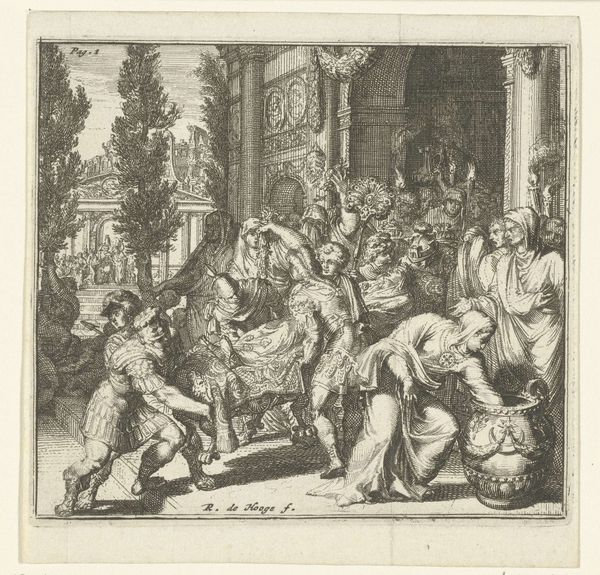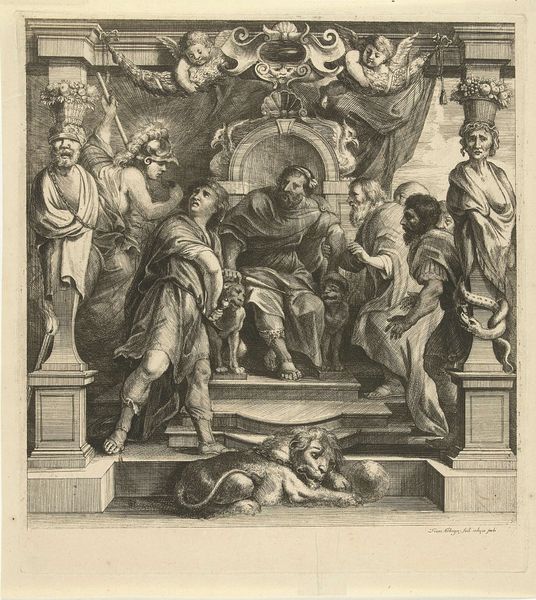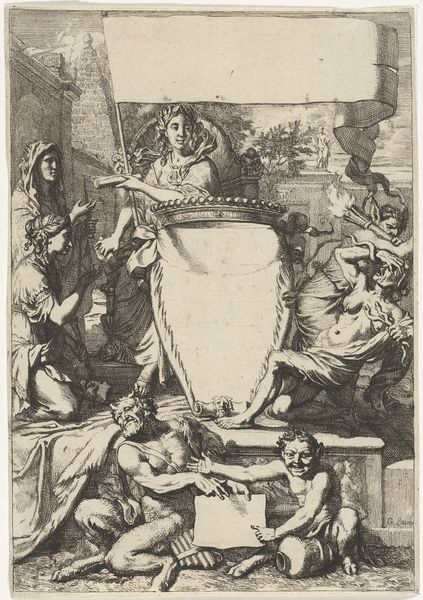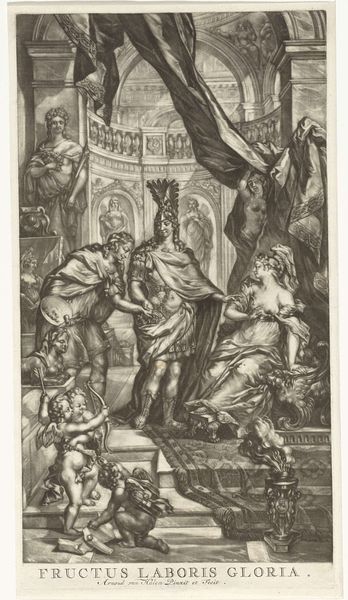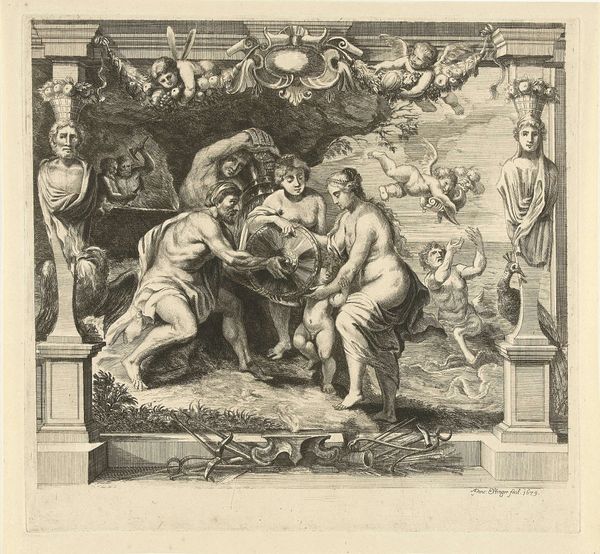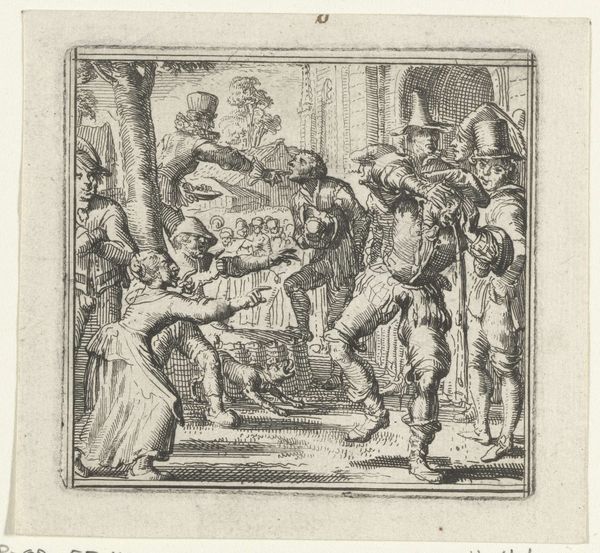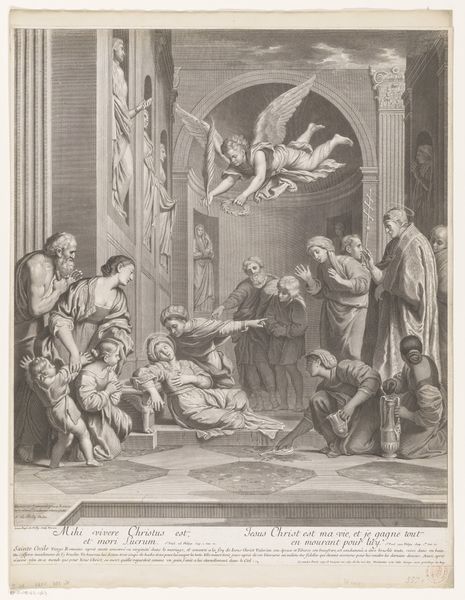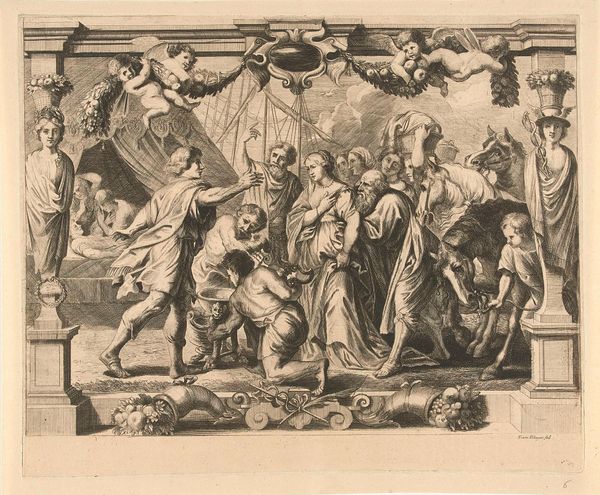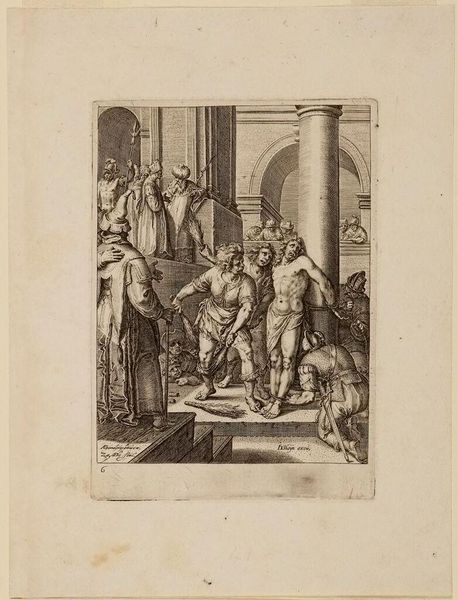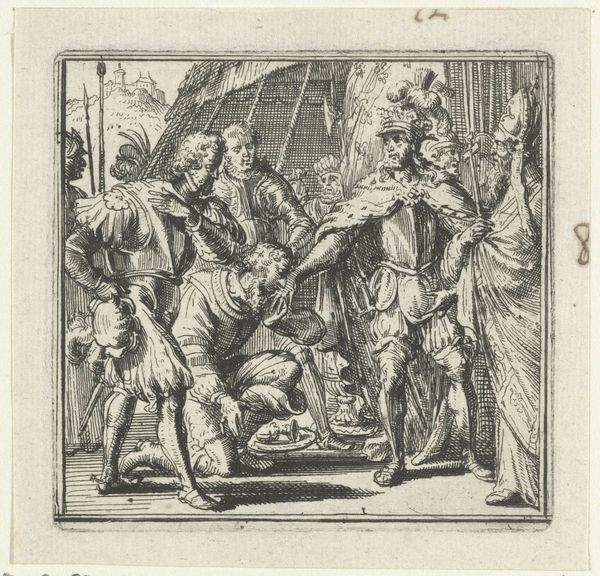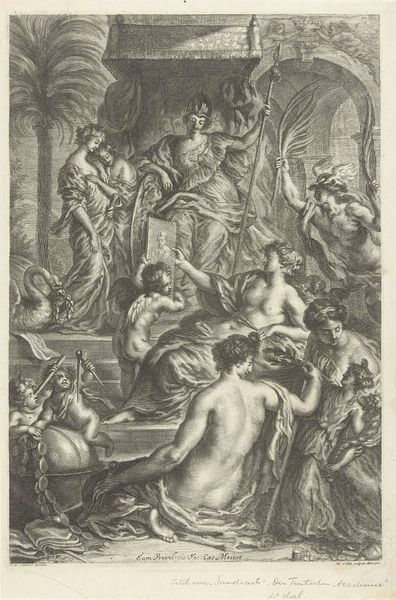
print, engraving
#
allegory
#
baroque
# print
#
perspective
#
figuration
#
history-painting
#
engraving
Dimensions: height 324 mm, width 320 mm
Copyright: Rijks Museum: Open Domain
Editor: We're looking at "Death of Achilles," a 1679 engraving by Franz Ertinger, housed here at the Rijksmuseum. It’s so rich in detail! The moment feels captured between earthly drama and divine intervention. What can you tell me about this print? Curator: This piece reflects the Baroque era’s fascination with perspective, dramatic narrative, and allegory, particularly its relationship with the political symbolism inherent in heroic depictions. Consider how Ertinger chose to represent Achilles' death, a well-known mythological tale. It isn't simply an illustration. Editor: Right, it’s staged almost. It reminds me of theater with those pillars. What about the public consumption of such prints? Curator: Exactly! These prints circulated widely, making classical stories accessible and shaping public perception of heroism. Think about who was commissioning and viewing these. The elaborate setting is consciously creating an association to power and imperial authority, especially when understanding its visual connection to Roman triumphal arches. Does this begin to shift how you interpret it? Editor: It does! It connects Achilles’ fall to wider commentaries on power and mortality. But the idealized figures almost distract from that darker reading. Curator: Precisely, it's a tension Ertinger orchestrates, mirroring Baroque society's complex relationship with classical ideals. How might the presence of religious elements like the cherubs reinforce or complicate this dynamic? Editor: I hadn’t considered that angle. It feels like there's a divine stamp of approval or, perhaps, judgment on the scene. Now I see how the piece makes you think about how legends are retold to serve a specific point of view, shaping a kind of cultural memory. Curator: Indeed, seeing art through a lens of social context enriches our experience, uncovering its powerful cultural purpose.
Comments
No comments
Be the first to comment and join the conversation on the ultimate creative platform.
